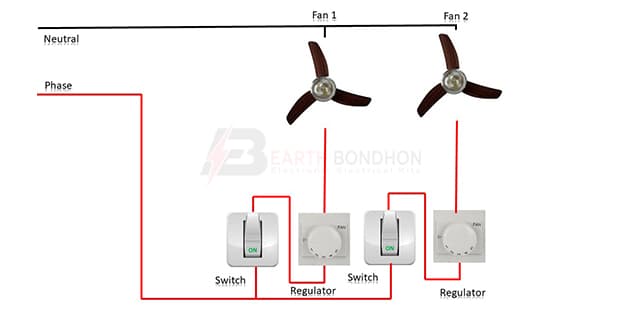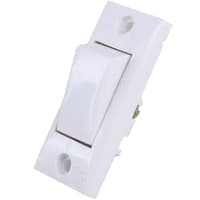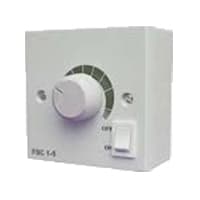Fan connection with regulator:
This diagram shows how to make a Fan connection with the regulator. In this circuit diagram, we use 2 ceiling fans 2 two-way switches, and 2 fan regulators. This diagram is very easy. First, we need to input the phase line to the switches and then from the switch to the regulator to the fan connection. After all, we need to join a neutral wire to the fan connection. Now, this circuit is ready for use. If you want to make this simple circuit and want to know more details about this diagram please check our youtube video below the post.
Advertisements
Components needed For this Project:
You can get the components from any of the sites below:
- Ceiling Fan 56-Inch [See Buy Click Amazon]
- Gang Switch [See Buy Click Amazon]
- Gang Dimmer [See Buy Click Amazon]
*Please note: These are affiliate links. I may make a commission if you buy the components through these links. I would appreciate your support in this way!
Advertisements
Components used to make the Fan connection with regulator:
A Ceiling Fan is a fan Mounted on the Ceiling of a Room or space, Usually, Electrically Powered, That Uses hub-mounted Rotating Blades to Circulate air flow. They cool people effectively by increasing speed. It Doesn not Cool the Air Temperature — we Feel Cooler Because the Fan Moves the Air Around Us, a Process Called Evaporative Cooling. Evaporative Cooling Works like this: A cold day will feel Even Cooler if There is a Breeze Because of the wind Chill Factor.
02. Switch:
An SPST (Single Pole Single Throw) Switch is a Switch That only Has a Single Input and can Connect Only to one Output. This means it Only Has one Input Terminal and Only 1 Output Terminal. A Switch is a Mechanical or Controlling Device That Changes the Flow of Current Direction or Interrupts the Flow of Current Within a Circuit diagram. An electrical line using Single Pole Single Throws (SPST) is Perfect for on-off switching. When the SPST is closed, the Circuit is Closed and the light from the lamp switches on the system. When The Single Pole Single Throw (SPST) is then opened, the light from the lamp goes out and the Circuit is off.
A Fan Speed Controller Controls The Voltage Across the Fan and Therefore Indirectly Controls its speed 220v AC line. A ceiling Fan Speed Regulator Actually Measures and Regulates the Speed of the Fan Using its Tachometer. Fan Speed is Controlled with Thyristor or Transformer Speed Controllers for Ceiling fans, and table fans. the fan is Controlled by a Capacitor, and the Voltage across the fan Determines the fan speed. A Speed Control loop Can be Implemented That is Independent of Manufacturing Variances and Wear on The Fan control system.
Thank You for visiting the website. Keep visiting for more Updates.
Frequently asked questions
A series connection implies the resistance is in line with the power supply fan. This reduces the voltage drop across the fan and its speed to your Project system's desired level. The greater the resistance, the higher the voltage drop across it, and that lowers the speed of the fan.
Fan regulators have an important place in the electrical switchboards. Fan regulators are very similar to light dimmers. Their function is to regulate/control the Circuit Diagram speed of the fan and provide a convenient environment for the residents.
Lastly, but most importantly is the speed regulator. Most of the time, the ceiling fan is in perfect shape but the regulator, a small round knob placed on the wall switch powering the fan, is broken. As suggested, the power system speed regulator determines the speed at which the fan rotates.
The basic mechanism of an electric regulator and includes the presence of resistors to reduce the power supply voltage of the ceiling fan. The downside of this type of regulator is that it heats up while controlling the voltage and hence, no electricity is saved by decreasing its Currenttlou speed.
The speed of the fan decreases with the increase in the number Digite of turns connected in the inductance coil winding. Heat and power supply loss are low in these regulators. The disadvantages are low power supply factor, cost, weight, and bulkiness.
Read more Single Phase Wiring
What is a kilowatt-hour (kWh) | kwh formula | What does kwh mean
Introduction to Electrical Units and CircuitskW and kWh on your electricity bill As your home uses electricity during...
What is the Difference Between kVA | What does KVA mean | kVA formula
Difference Between KVA ExplainedWhat does KVA Mean? There are technical terms aplenty when it comes to generators, and...
Power Factor | Power Unit | Energy | Electricity Unit
Power factor definition | Calculating Power FactorPower Factor Values In a purely resistive circuit, the power factor...




0 Comments
Trackbacks/Pingbacks